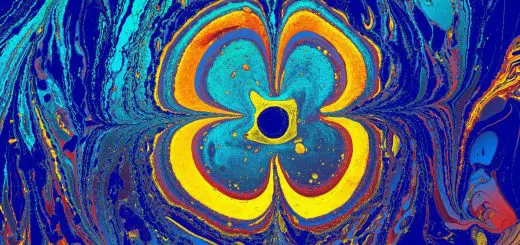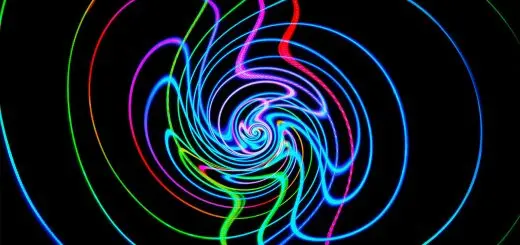Khonsu: Moon God and Timekeeper

Looking for more amazing products? Check out our online store and explore our collection here! Happy shopping!
Before diving in, please note: This post is for informational purposes only. If you’d like to know more about how we approach topics, feel free to check out our friendly Disclaimer Page.
Hey there, amazing readers! 
We’re committed to delivering quality posts, and your support (even just sticking around despite the ads) means everything to us. So, bear with us, and thanks for helping us keep the good vibes rolling. Now, on to the fun stuff!
TRANSLATE BUTTON AT THE END OF THE ARTICLE
Overview
Khonsu, the Moon God and Timekeeper, held a significant role in ancient Egyptian mythology and culture.
Representing the moon and its cycles, Khonsu was associated with healing, time, and magic.
This article explores the origins, symbolism, and various aspects of Khonsu’s worship in Ancient Egypt.
From his depiction in art and architecture to his association with lunar cycles and medicine, Khonsu’s influence and legacy have left a lasting impact on cultural and religious practices.
Additionally, this article will delve into the worship of Khonsu and the temples dedicated to him, as well as his influence on other cultures and belief systems.
Through a comprehensive exploration of Khonsu, we gain insights into the rich tapestry of Egyptian mythology and the enduring legacy of this revered deity.
Origins and Symbolism of Khonsu
Khonsu, also known as Khensu or Khonshu, originated from the ancient Egyptian pantheon.
He was primarily associated with Thebes, an important city in Upper Egypt.
Depicted as a youthful man wearing the Moon disc and crescent headdress, Khonsu was often shown holding the ankh, symbolizing life.
His name is derived from the Egyptian word "khensu," meaning "to travel" or "to wander," representing Khonsu’s connection with the moon’s movement across the night sky.
Symbolically, Khonsu embodied the lunar cycles and the mysteries of the night.
The moon’s waxing and waning, representing life’s cycles and rhythms, were intricately linked to Khonsu’s essence.
His association with the moon also connected him to fertility, growth, and the rejuvenation of life.
Khonsu’s role as a healer further emphasized his connection with cycles and renewal, as the moon was believed to possess powerful healing energy.
The Role of Khonsu in Ancient Egyptian Mythology
In ancient Egyptian mythology, Khonsu played a vital role as a protector of the pharaohs.
He was considered a son of Amun, the supreme god of Thebes, and Mut, the goddess of motherhood.
Khonsu was believed to be a divine child who restored vitality to the pharaoh through his healing powers.
As a celestial deity, Khonsu was also associated with magical rituals and divination.
His influence extended beyond the earthly realm, guiding the destiny of individuals and offering protection throughout their lives.
Additionally, Khonsu was associated with the concept of time.
He was considered a celestial timekeeper, responsible for the measurement and regulation of time.
His connection with time made Khonsu an essential deity in the ancient Egyptian belief system, as time was perceived as a cyclical and ever-present force governing the universe.
Depictions of Khonsu in Art and Architecture
In ancient Egyptian art and architecture, Khonsu was often depicted as a young man with a falcon head wearing the Moon disc and crescent headdress.
He was portrayed with a slender body, a muscular build, and a serene expression.
The ankh, the symbol of life, was frequently held in his hand, emphasizing his role as a healer and life-giver.
Khonsu’s depictions can be found in various forms of artwork, including relief carvings on temple walls and statues.
His presence in temples dedicated to other deities, such as Amun, showcased his close connection with the supreme god and his importance within the pantheon.
These artistic representations of Khonsu served to honor and invoke his divine qualities, reinforcing his role as a powerful and benevolent deity.
Khonsu’s Connection to the Moon and Lunar Cycles
As the Moon God, Khonsu’s connection to lunar cycles was of utmost importance.
Explore the Path to Spirituality and Enlightenment – Start Here.
The ancient Egyptians believed that the moon went through phases, transitioning from new to full and back again.
Khonsu was seen as the driving force behind these cycles, symbolizing the constant renewal of life and the ever-changing nature of the universe.
The lunar cycle held great significance in Egyptian culture, serving as a guide for agricultural activities and religious ceremonies.
The waxing and waning of the moon played a crucial role in determining planting and harvesting seasons, as well as the timing of religious festivals.
Khonsu’s association with the moon made him an integral part of these rituals, ensuring the prosperity and well-being of the people.
Khonsu’s Role in Egyptian Healing and Medicine
Khonsu was revered as a powerful healer and was often invoked for his curative abilities.
As the son of Amun and Mut, he possessed the divine energy necessary to restore health and vitality.
Temples dedicated to Khonsu served as centers for healing, where individuals would seek his intercession and offer prayers for recovery.
The ancient Egyptians believed that illnesses were caused by imbalances in the body and soul.
Khonsu’s healing powers were believed to bring harmony and restore these imbalances.
In temple rituals, priests would perform ceremonies and offer prayers to Khonsu, requesting his intervention in healing the sick.
Offerings of food, incense, and flowers were made to honor and appease the deity, seeking his favor and assistance in restoring health.
Khonsu’s Association with Time and Chronology
Khonsu’s association with time and chronology made him an essential figure in ancient Egyptian cosmology.
As a celestial timekeeper, he was responsible for the measurement and regulation of time, ensuring the balance and rhythm of the universe.
The ancient Egyptians viewed time as cyclical, with the repetition of events and seasons mirroring the movements of the stars and celestial bodies.
Khonsu’s role in measuring time extended to the realm of human existence as well.
He was believed to guide the destiny of individuals, influencing their lives and their place within the cosmic order.
The concept of time was deeply intertwined with religious and social practices, and Khonsu’s presence permeated every aspect of Egyptian life.
The Worship of Khonsu in Ancient Egypt
The worship of Khonsu held great importance in ancient Egyptian society, particularly in Thebes.
Temples dedicated to Khonsu served as centers of religious and cultural activity, where the faithful could pay homage to the deity and seek his blessings.
The priests of Khonsu played a pivotal role in maintaining the rituals and ceremonies associated with his worship.
The worship of Khonsu involved elaborate rituals and offerings.
Devotees would bring offerings of food, beverages, and incense to the temple.
Prayers and hymns would be recited to honor and invoke the deity’s presence.
The priests, acting as intermediaries between the worshipers and Khonsu, would perform ceremonies aimed at appeasing and pleasing the god.
These rituals served to establish a connection between the mortal realm and the divine, ensuring the favor and protection of Khonsu.
Temples Dedicated to Khonsu: Prominent Examples
Several temples dedicated to Khonsu have been discovered throughout ancient Egypt.
One of the most prominent examples is the Temple of Khonsu at Karnak, located in Thebes.
This temple, built during the New Kingdom, was dedicated to Khonsu and served as a place of worship and celebration.
The Temple of Khonsu at Karnak featured a grand entrance, intricate reliefs, and courtyards where religious ceremonies took place.
Another notable temple dedicated to Khonsu is the Temple of Khonsu at Luxor.
This temple, situated on the east bank of the Nile, was constructed during the reign of Ramesses III.
It consists of a series of halls, shrines, and courtyards, with intricately carved reliefs depicting scenes from Khonsu’s mythology.
The Temple of Khonsu at Luxor served as a sacred space where devotees could connect with the divine and seek the blessings of the Moon God.
Rituals and Offerings to Honor Khonsu
Rituals and offerings played a crucial role in honoring and appeasing Khonsu.
The faithful would bring offerings of food, beverages, and incense to the temple, symbolizing their gratitude and devotion.
These offerings were believed to provide sustenance to Khonsu and ensure his benevolence towards the worshipers.
Prayers and hymns were recited during ceremonies to invoke Khonsu’s presence and seek his favor.
Priests, adorned in ceremonial attire, would perform rituals aimed at pleasing the god and maintaining his protection.
These rituals often included purification rites, symbolic gestures, and the presentation of sacred objects.
Khonsu’s Influence on Other Cultures and Belief Systems
Khonsu’s influence extended beyond ancient Egypt, influencing neighboring cultures and belief systems.
In Nubia, a region to the south of Egypt, Khonsu was worshipped as a prominent deity.
His attributes and symbolism merged with local traditions, creating a unique blend of Egyptian and Nubian religious practices.
In later periods, Khonsu’s mythology and symbolism found their way into Greco-Roman culture.
The Greeks associated Khonsu with their god Hermes, while the Romans equated him with their deity Mercury.
This syncretism demonstrates the enduring appeal and adaptability of Khonsu’s divine qualities, transcending cultural boundaries and evolving over time.
The Legacy of Khonsu: Modern Interpretations and References
Khonsu’s legacy endures through modern interpretations and references in popular culture.
In contemporary times, Khonsu has been portrayed in various forms of media, including literature, comics, and movies.
His association with time, healing, and magic has captured the imagination of artists and writers, adding depth and intrigue to their creations.
Furthermore, the influence of Khonsu can be seen in modern pagan and neopagan belief systems.
His connection with the moon and its cycles resonates with those who embrace nature-based spirituality and the worship of celestial forces.
Khonsu’s depiction as a youthful and powerful deity continues to inspire reverence and awe, reminding us of the enduring appeal of ancient Egyptian mythology.
Conclusion
Khonsu, the Moon God and Timekeeper, played a multifaceted role in ancient Egyptian mythology.
From his origins as a celestial deity to his association with lunar cycles, healing, and time, Khonsu held immense significance in Egyptian culture.
His depictions in art and architecture, as well as the temples dedicated to him, served as focal points for worship and celebration.
The rituals and offerings offered to honor Khonsu aimed to establish a connection between the mortal realm and the divine.
Khonsu’s influence extended beyond ancient Egypt, finding its way into neighboring cultures and later syncretic belief systems.
Today, Khonsu’s legacy lives on through modern interpretations and references, reminding us of the enduring power and appeal of this revered deity.

The Enlightenment Journey is a remarkable collection of writings authored by a distinguished group of experts in the fields of spirituality, new age, and esoteric knowledge.
This anthology features a diverse assembly of well-experienced authors who bring their profound insights and credible perspectives to the forefront.
Each contributor possesses a wealth of knowledge and wisdom, making them authorities in their respective domains.
Together, they offer readers a transformative journey into the realms of spiritual growth, self-discovery, and esoteric enlightenment.
The Enlightenment Journey is a testament to the collective expertise of these luminaries, providing readers with a rich tapestry of ideas and information to illuminate their spiritual path.
Our Diverse Expertise
While our primary focus is on spirituality and esotericism, we are equally passionate about exploring a wide range of other topics and niches 

To ensure we provide the most accurate and valuable insights, we collaborate with trusted experts in their respective domains 
Our blog originally focused on spirituality and metaphysics, but we’ve since expanded to cover a wide range of niches. Don’t worry—we continue to publish a lot of articles on spirituality! Frequently visit our blog to explore our diverse content and stay tuned for more insightful reads.
Hey there, amazing reader! 
Check out our store here and take a peek at some of our featured products below! Thanks for being awesome!
















